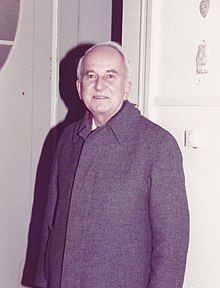- Lewis & Clark High School
- Collatz Conjecture by Carl Odegard
-
Collatz Conjecture


Overview
The Collatz conjecture has been around since 1937, and today remains one of mathematics most puzzling problems. Jeffrey Lagarias, a mathematician who wrote many highly influential papers on the problem famously stated that the Collatz conjecture "is an extraordinarily difficult problem, completely out of reach of present day mathematics." So what exactly is the Collatz Conjecture? The idea is pretty simple, the problem revolves around two simple equations, and whether repeating the equations will eventually lead you to the same answer, one, no matter what number is input.
History
 The Collatz conjecture first came into the mathematics scene in 1937, and was named after famous German mathematician, Lothar Collatz. It is also called the, 3n + 1 problem, the 3n + 1 conjecture, the Ulam conjecture Kakutani's problem, the Thwaites conjecture, Hasse's algorithm, or the Syracuse problem.
The Collatz conjecture first came into the mathematics scene in 1937, and was named after famous German mathematician, Lothar Collatz. It is also called the, 3n + 1 problem, the 3n + 1 conjecture, the Ulam conjecture Kakutani's problem, the Thwaites conjecture, Hasse's algorithm, or the Syracuse problem.Problem
The conjecture revolves around the two basic equations, 3n + 1, and n / 2. The equation works like this, if the number is odd, then you multiply it by 3 and add 1, if it’s even then you divide by 2. If the conjecture is true then every number no matter how big, will eventually lead back to 1. The idea is so simple, yet no one has been able to definitively prove it.
Significance
This conjecture is one of mathematics most notorious unsolved problems. Due to its simplicity it is attempted by many people who underestimate the scope of the problem. Try thinking of a new color that is out of the human eye’s visible spectrum, a pretty simple idea, but impossible. Proving the Collatz conjecture is a similar challenge, it is a simple idea, however there is just no way to describe it with our current knowledge of mathematics. If the conjecture is solved it could give us a whole new perspective of theoretical math and perhaps lead to world changing discoveries.

